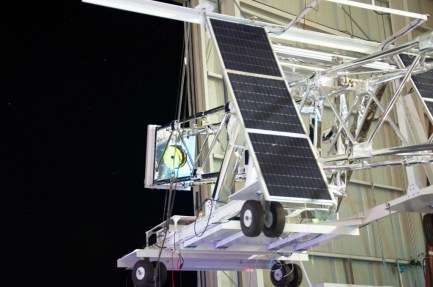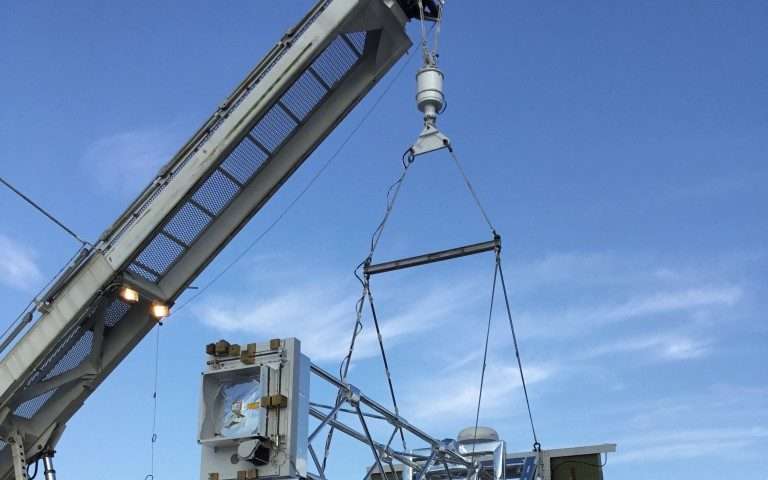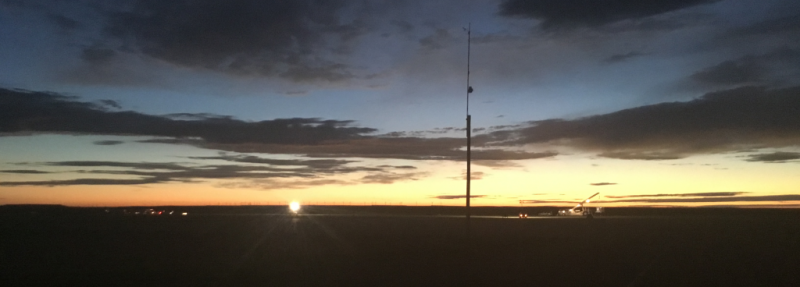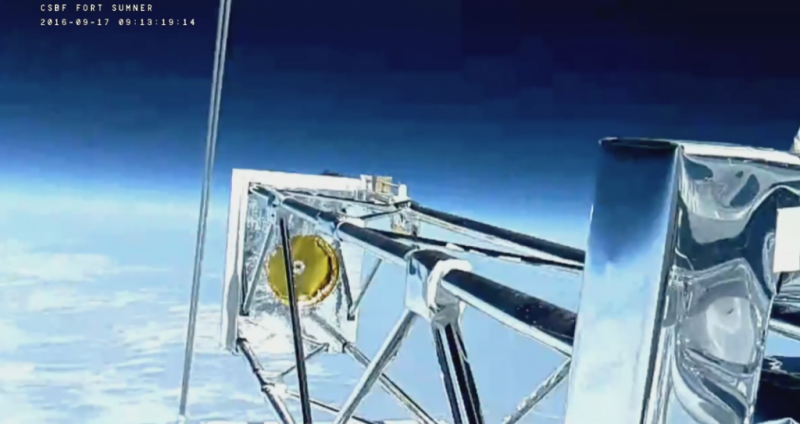X-ray telescope X-Calibur flies high above New Mexico

On Sept. 19, Henric Krawczynski, the principal investigator on the X-Calibur telescope mission, announced on the mission blog that the telescope had landed safely near the border between Arizona and New Mexico. The team retrieved the temperature-sensitive X-ray mirror, but is waiting for a bulldozer to make a path for the recovery truck so the researchers can recover the gondola and the telescope it carries.
Krawczynski, professor of physics in Arts & Sciences at Washington University in St. Louis, has been working since 2014 to test his novel 8-foot-focal-length X-ray telescope. The telescope looks at celestial objects in an entirely new light, measuring the polarization (the plane in which the electric field of the X-rays oscillates) of the high-energy X-ray emission.
Krawczynski said after the flight that in the 24 hours the telescope floated at the top of the stratosphere, it collected good data on the X-ray emission from a neutron star, a mass-accreting neutron star and a stellar-mass black hole.
It was a picture-perfect end to a sometimes nerve-wracking launch campaign, when it seemed that the weather wouldn't cooperate in time for the stratospheric turnaround—the reversal of wind direction at altitude that ensures the balloons and their cargo stay within telemetry range during the mission.
In addition to Krawczynski, team members included: Matthias Beilicke, now at the University of Hamburg; Fabian Kislat, a research assistant professor; Paul Dowknott, an electrical engineer; and graduate student Banafsheh Beheshtipour.
-

On Sept. 7, researchers got up at 5 a.m. to conduct a hang test, where a crane picked up the telescope to test the payload’s ability to communicate with ground equipment via telemetry. Krawczynski compared this test to the dress rehearsal for a performance. -

The team rose before dawn Sept. 13 to prepare for launch, but the surface winds changed direction and the attempt was scrubbed at 6:10 a.m. Credit: Washington University in St. Louis -

On-board camera takes a beauty shot of the telescope at float altitude several hours later. Credit: Washington University in St. Louis
Provided by Washington University in St. Louis



















